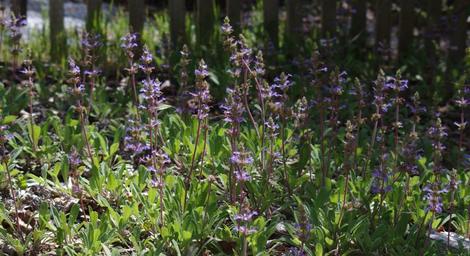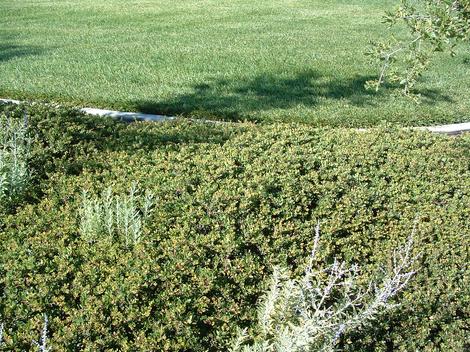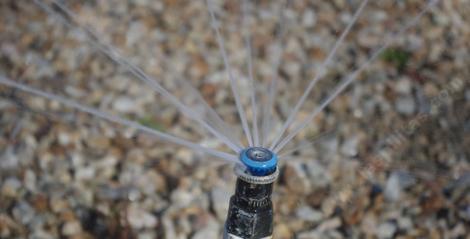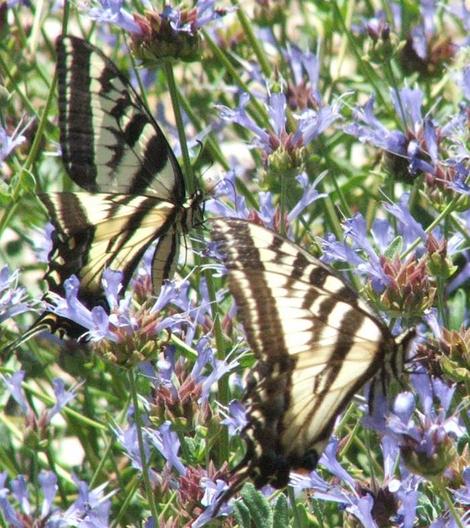How to remove the grass and replace your lawn with native plants.
1. Why do you want to remove your
lawn? It's helpful to know what you're replacing the lawn with.
a. This is California! Lawns do not occur
here. What a waste! Look
at low ground covers. Go to 2.b. Environmental concerns-water use. Use taller groundcovers and shrubs. Taller bushes provide wildlife cover and require less water, chemicals and other inputs after first season, and you'll meet your neighbors you tend the garden.
c. Costs. (see notes at end of article) Are you paying $100 a month to have the front lawn mowed, another $50 per month to water the lawn? $1,800 per year for what? You should be able to replace the lawn for about the costs of one years costs.
d. I'm not enthused about replacing a lawn with a native meadow or native grasses. Lawn grasses have been developed for centuries. We really do not have drought tolerant lawns in the wild. So if you want a lawn, lower the overall size of the traditional lawn to what you actually need and use. Replace the rest with groundcovers, shrubs like Ceanothus or Manzanitas, and walkways.
2. Kill the grass.
spray to kill the grass and weeds
that was called a lawn.or
dig up the grass to remove the lawn
or
spray to kill the lawn and then dig out all the dead material
there should be no debris left when you are done, just bare ground tilled as little as possible
3. Renovate the lawn sprinklers.
Replace the old high volume lawn sprinklers with low volume sprinklers. For most native plants they want to be watered well when you plant them and after a few months they want just a little water every week.Don't be a drip.
4. Plant fun stuff the first year. The nutrition and pathogens overwhelm the long term native plants if there are planted first.
Here are some plants to consider: Prostrate California Sagebrush – Artemisia californica 'Montara', Buckwheats - Eriogonums: arborescens, Eriogonum grande rubescens, Eriogonum umbellatum, California Fuchsia – Zauschneria species, Baccharis pilularis pilularis Pigeon Point, Prostrate Gum Plant – Grindelia stricta venulosa, – Salvias:, Salvia 'Mrs. Beard', Salvia 'Gracias', Salvia 'Bee's Bliss', Salvia 'Dara's Choice', Salvia 'Pt. Sal' , Creeping Sage, Salvia sonomensis, Salvia sonomensis Farmar-Bower, Seaside Daisy – Erigeron 'Wayne Roderick', “W.R.', Erigeron 'Cape Sebastian', Corethrogyne filaginifolia, Silver carpetAlso look at the low groundcover page.
Don't forget the mulch.
5. Pay attention to the weeds and the explosive new plants you've just planted.
It's like you dropped a starving family from the hills into a fast food place and told them they could take as much as they wanted. They'd have a tendency to drop dead quickly. But they haul off the food first. Then you could build your new restaurant to your taste.After a year or so, you can start planting your long term plants.
Usually by this time you've met all you neighbors. They've come over to check out you yard and either tell you you're crazy or ask how to do it. Many neighbor watches/ block parties have started from a lawn replacement of a front yard.
The costs of a lawn versus a groundcover or hardscape.
Xeriscaping, zeroscaping and xerogardening all have been used in all sorts of diabolic ways. I think it's safer to use native plants from your region to achieve low water use. Use Texas plants in Texas, California plants in California, New York Plants in New York. Do not put them all together in a garden, call it zeroscaping and expect low water use.

Some of the native groundcovers can mimic a lawn. Except you do not have to mow them. A low groundcover planting after twenty six (or is it twenty seven years), with no water.Baccharis
Pigeon Point, Salvia
Pt. Sal. and Ceanothus
maritimus.









